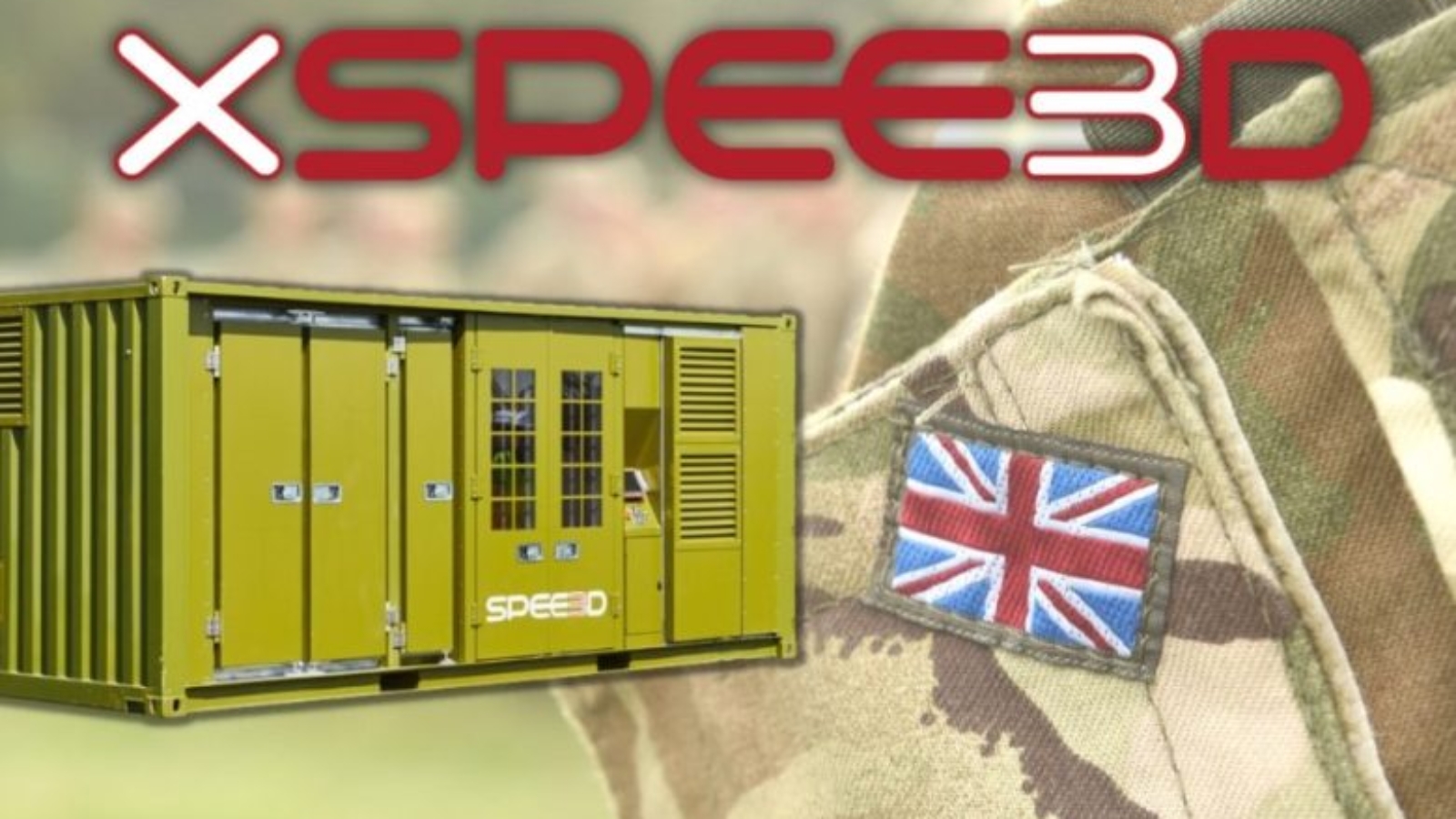The British Army is reportedly expected to acquire SPEE3D’s cold-spray metal 3D printing technology to help develop the army’s unplanned repair capabilities. In addition to purchasing the XSPEE3D printer, the British Army has signed a two-year contract to work with SPEE3D which involves delivering training courses, and working closely with the British Army’s Royal Electrical and Mechanical Engineers.
Defense manufacturing requires technology that can quickly produce parts from well-known metal alloys to address real-time needs in the field where forces are typically located. XSPEE3D is well-suited to this application, as it is fully transportable as a standard shipping container with the printer and all auxiliary equipment in one box, and provides on-demand manufacturing which is critical for deployed troops to maximize availability and minimize downtime. With SPEE3D technology, parts can be manufactured and finished in hours instead of days – for any vehicle or platform – from a wide range of materials, including aluminum 6061, aluminum bronze, and copper.
“We are excited to be invited by the British Army to work closely together and bring our latest printer XSPEE3D to the field, offering a deployable and easy-to-use solution. Working together with defense worldwide, we have explored the impact of additive manufacturing to solve real supply chain problems by printing critical parts on demand and in rough conditions. We look forward to growing our relationship with the British Army. We thank them for trusting us as their partner in this journey,” said Byron Kennedy, Co-Founder and CEO of SPEE3D.
Manufacturing on Demand

“The British Army chose to work with SPEE3D based on their successful track record of partnering with defense forces worldwide to provide the latest additive manufacturing solutions. We are proud to be a forward-thinking organization and are always exploring the latest technologies to solve the military’s most pressing supply chain issues, which SPEE3D’s technology helps us to solve,” said Lieutenant Colonel Davidson Reith, of the British Army.
Recently, SPEE3D partnered with the British Army as part of the US Army’s Project Convergence program to demonstrate the impact that SPEE3D’s patented cold-spray technology can have on military supply chains. In the field, the British Army and SPEE3D team were able to print critical replacement parts in just minutes or hours, before these parts were post-processed and put to use for various armored vehicles at Fort Irwin, throughout the exercise.
SPEE3D has also worked with the US Navy, taking part in their REPTX exercise to test WarpSPEE3D’s deployable capabilities to print maritime military parts on demand, and in various port and sea conditions; and the Australian Army, on several projects to test and validate metal 3D printing as a military capability for the field – taking the WarpSPEE3D thousands of kilometers into the harsh bushland of the remote Northern Territory, as part of exercise Koolendong.
You might also like:
Stratasys acquires Covestro’s AM materials business: The materials, IP portfolio, and talent Stratasys acquired from Covestro will help Stratasys address new applications in key technology categories such as stereolithography, P3/DLP, and powder bed fusion – including SAF technology. They complement Stratasys’ existing materials expertise for PolyJet and FDM technologies.
* This article is reprinted from 3D Printing Media Network. If you are involved in infringement, please contact us to delete it.
Author: Edward Wakefield


Leave A Comment